Text
I’m very intrigued by how Monica both confirms and challenges gender identity. It seems like she is able to maintain her femininity while having to go against the gender norms set so she can pursue her goals and passions. To me, this is a great ideal and balance that many portrayals of strong, revolutionary women fail to consider. I really appreciate how accentuated and enhanced the depth of Monica is as a multifaceted character. These nuances seem remarkable and really flesh her out as a character and protagonist to start and continue rooting for. I feel that when films focus on two characters that have feelings for each other and are interested in the same field result in a competitive environment so I’m glad that Love and Basketball does not do the same thing. Maybe this is because the world of basketball is already divided by gender but even when this is the case, it seems like there still has to be comparisons and that it’s impossible for people to just coexist and pursue their passions freely. I also really love how beautifully you discuss how the film portrays Monica’s drive and character as well as her relationship with Quincy.
Critical Film Analysis: Love & Basketball

https://drive.google.com/file/d/1xmTgozILMEuBzjrQlRwJGVPjhmLKjrX_/view?usp=drivesdk
Love and Basketball chronicles the intertwined lives of Monica and Quincy across four distinctive periods. Their childhood friendship rooted in basketball becomes complicated when Quincy accidentally injures Monica, leading to a rollercoaster of emotions but ultimately forging a deep connection. As teenagers, they navigate high school life, with Quincy's popularity and Monica's basketball prowess setting the stage for a budding romance that endures despite challenges. Their college years bring individual struggles: Quincy grapples with media scrutiny and family issues while Monica contends with coach conflicts, straining their relationship to a breaking point. Fast forward to their professional basketball careers, Monica playing overseas and Quincy in the NBA. A pivotal moment arises when Quincy faces an injury and impending marriage, prompting Monica to confront her past and chart a new course. Their love ultimately triumphs, sealed by a high-stakes basketball game, leading to marriage, parenthood, and Monica's eventual achievement in the WNBA, symbolizing their enduring connection through their daughter's love for the game in the post-credits scene.
Monica's character in Love and Basketball serves as a powerful canvas for examining Judith Butler's concept of gender performativity. Her journey and passion for basketball intricately challenge and redefine traditional gender roles, offering a profound exploration of performative gender within the film. Butler argues that “hegemonic heterosexuality is itself a constant and repeated effort to imitate its own idealizations” (338), meaning that our prescribed ideas of gender only come about through enforced stereotypes and expectations, rather than being predetermined ideas. In this way, Monica breaks the mold of predetermined ideas of both masculinity and femininity.
From a young age, Monica exhibits a profound affinity for basketball, a sport traditionally associated with masculinity. Her natural talent, determination, and passion for the game become the cornerstone of her identity, highlighting how her engagement in this particular activity challenges the conventional expectations of femininity.
Monica's embodiment of athleticism disrupts the societal notion that certain sports are inherently masculine. She defies the prescribed boundaries of what it means to be a girl by embracing basketball wholeheartedly, showcasing physical prowess and competitiveness commonly attributed to masculinity. Her performance in the realm of basketball not only challenges but reconfigures the boundaries of gendered activities, exposing the fluidity and constructed nature of gender roles.
Throughout the film, Monica's dedication to basketball blurs the lines between conventional notions of femininity and masculinity. She navigates the basketball court with skill and determination, not conforming to the passive image often associated with women in mainstream media. Instead, Monica actively challenges this notion, illustrating that gender identity is not predetermined but rather shaped through actions and performances.
The concept of performative gender is vividly demonstrated in Monica's actions, which defy societal expectations and challenge the status quo. Her passion for basketball becomes a platform for the reimagining of gender norms, prompting audiences to reconsider the limitations imposed by societal constructs.
Furthermore, Monica's embodiment of performative gender extends beyond her actions on the court. Her refusal to adhere to traditional gender roles within romantic relationships and her unwavering commitment to her career aspirations exhibit a deliberate performance that transcends prescribed gender norms.
In essence, Monica's character in Love and Basketball becomes an embodiment of Judith Butler's theory of gender performativity. Her passionate engagement with basketball challenges and reshapes traditional gender roles, presenting a compelling narrative that questions the rigidity of societal expectations surrounding femininity and masculinity. Through Monica's journey, the film invites audiences to reconsider the performative nature of gender and the fluidity inherent in its expression.
Monica's bold defiance of traditional gender roles, intricately explored within the film's narrative, segues seamlessly into the broader exploration of societal stereotypes through character portrayals, aligning with Stuart Hall's reception theory and the film's approach to challenging norms. While Monica's passionate engagement in basketball serves as a catalyst for questioning and reshaping gender norms, the subsequent narrative unfolds, compelling audiences to reconsider ingrained societal stereotypes, encouraging critical decoding of these moments, and fostering a more inclusive understanding of gender dynamics and relationships.
Love and Basketball consistently challenges societal stereotypes through its narrative and character portrayals, aligning with Stuart Hall's reception theory about decoding media messages. Several instances stand out, prompting audiences to resist or reshape prevalent societal norms. By operating within the basketball realm, which is often a male-dominated space, while empowering Monica, the film “acknowledges the legitimacy of hegemonic definitions to make the grand significations (abstract), while, at a more restricted, situational (situated) level, it makes its own ground rules” (Hall, 516).
One poignant example is Monica's rejection of the 'damsel in distress' trope within romantic relationships. Unlike conventional portrayals of women waiting for men to define their lives, Monica asserts her agency in shaping her destiny, refusing to conform to the passive roles often depicted in mainstream media. Her determination to prioritize her career aspirations over conforming to traditional gender roles challenges the audience's expectation of female characters, inviting them to decode this rejection as a departure from typical gender norms.
Moreover, the film subverts the stereotype of women as mere objects of desire by presenting Monica as a multifaceted character. Rather than being reduced to a passive love interest, Monica's character is layered, showcasing her emotional depth, ambition, and imperfections. Audiences decoding these nuances witness a departure from the traditional male-centric gaze, reshaping the perception of female characters in cinema.
Additionally, the film challenges the stereotype that sports are exclusively a male domain. Monica's journey in pursuing basketball as a career confronts the societal notion that certain sports are inherently masculine. By showcasing her athleticism, competitiveness, and love for the game, the film defies the notion that women are less capable in sports, prompting audiences to decode these moments as a challenge to gendered stereotypes in athletic pursuits.
Furthermore, the depiction of Monica's and Quincy's relationship resists conventional gendered dynamics. The film portrays emotional vulnerability in Quincy's character, breaking the stereotype of male emotional detachment. Monica and Quincy's relationship evolves beyond the constraints of traditional gender roles, inviting audiences to decode these nuanced interactions as a reimagining of relationships that transcend societal expectations.
Moving from the film's challenge to societal norms through characters to its portrayal methods, Love and Basketball offers a complex view. It tackles gender expectations while following Monica's journey, challenging traditional movie ideas about gender and romance. This allows for a detailed look at both its social messages and its approach to moviemaking, going beyond usual portrayals in mainstream cinema.
The film intricately navigates the male gaze in its portrayal of Monica's athletic prowess and romantic interactions, employing cinematography that both aligns with and challenges traditional conventions. When showcasing Monica's basketball skills, scenes often focus on her agility and dedication without overt objectification. For instance, in the basketball court sequences, the camera skillfully captures Monica's movements, emphasizing her talent and determination. During pivotal basketball moments, such as her winning shot, the camera follows her actions, highlighting her skill without reducing her to a mere object for the male viewer's gaze. This deliberate framing invites the audience to appreciate Monica's athletic abilities and passion for the game without exploiting her physicality.
Conversely, in romantic interactions, the film occasionally aligns with elements of the male gaze seen in traditional cinematic tropes. For instance, during intimate moments between Monica and Quincy, certain scenes utilize close-ups and framing that could cater to a male-centered perspective. However, the film also subverts these norms by ensuring Monica's character maintains agency and complexity within the narrative. In moments where Monica navigates her romantic relationship, the storytelling consistently portrays her as an individual with desires, emotions, and aspirations, transcending the traditional objectification often associated with the male gaze in cinematic portrayals of women. For example, the scene where Monica confronts Quincy about his infidelity portrays her emotional depth and agency, shifting the focus from mere objectification to a complex depiction of her feelings and choices within the relationship.
Overall, the film carefully balances between conforming to and challenging aspects of the male gaze. Through specific examples in cinematography and narrative framing, the film acknowledges prevalent cinematic tropes while also presenting Monica's character with depth, agency, and emotional complexity. The deliberate portrayal of Monica's athletic talent without excessive objectification and the nuanced handling of her romantic interactions contribute to a layered depiction that both engages with and transcends elements of the male gaze prevalent in cinematic storytelling.
Love and Basketball skillfully encapsulates Monica's profound evolution from a spirited young girl to a resolute athlete, challenging rigid gender expectations and redefining societal norms. Her ardent pursuit of basketball, intertwined with her resilience against conventional standards, serves as a beacon, reshaping perceptions of athleticism and established gender roles. Throughout the narrative, the film carefully delves into Monica's character, granting her a multifaceted portrayal brimming with depth and autonomy. Concurrently, her relationship with Quincy forms an evocative canvas that subverts traditional gender dynamics. The movie beckons audiences to engage critically with its compelling storyline, urging contemplation on nuanced portrayals that disrupt and reconstruct prevalent stereotypes. Monica's unwavering commitment to basketball and her intricate romantic journey within Love and Basketball serve as a powerful commentary, challenging societal norms while meticulously navigating between conforming to and diverging from cinematic conventions. This intricate dance within the film's narrative fabric transcends conventional gender depictions, carving an indelible mark in the realm of mainstream cinema with its layered and authentic portrayal of a woman's journey through sport, love, and self-discovery.
Citations:
Butler, Judith. “Gender Is Burning: Questions of Appropriation and Subversion.” Taylor & Francis, September 3, 2014. https://www.taylorfrancis.com/chapters/mono/10.4324/9780203760079-5/gender-burning-questions-appropriation-subversion-judith-butler.
Hall, Stuart. “Encoding and Decoding in the Television Discourse.” Semantic Scholar, September 1, 1973. https://www.semanticscholar.org/paper/Encoding-and-Decoding-in-the-television-discourse-Hall/9d8d680436345535ae2598f9e6786c68d4143f9b.
Love & Basketball Directed by Gina Prince-Blythewood, performances by Sanaa Lathan and Omar Epps, 2000.
3 notes
·
View notes
Text
I am familiar with the butch stereotype and its recurrences in society but did not realize there was an actual term and analysis for those assumptions and experiences. Lesbians having to be boxed into this stereotype and feeling lost in their own identity if they don’t is horrifying. Having to act a certain way as to not invalidate your identity after already defying heterosexuality seems very contradicting and backwards. Even when defying heterosexuality and pursuing what should feel comfortable, there is still a pressure to conform and cater to heterosexuality. The pressure for Ely and Max’s relationship to fall under certain social standards is an outraging aspect of being queer. Even when not complying to heteronormativity, there is still an urge to be validated which results in still having to conform to something traditional and socially acceptable which Go Fish seems to explore throughout those scenes. I feel like these limitations reduce being queer and the experiences that result from it as there doesn’t seem to be a way to just freely be who you are and there is always another set of standards telling you you’re not who you actually are.
Go Fish: Stereotypes and Portrayal of Identity
Lesbianism and Gender Presentation in Go Fish
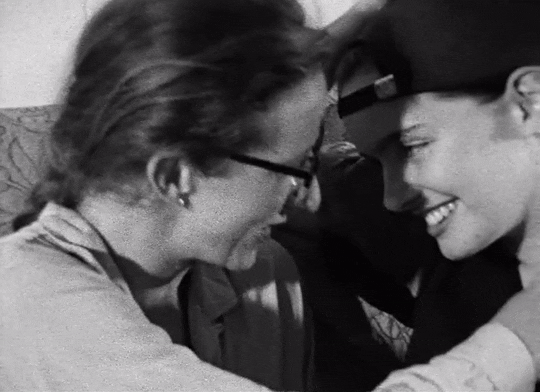
Media representation plays a large role in how society views lesbian identity. Lesbians threaten the survival of the patriarchy by decentering the desire of men, ensuing degrees of stigma and stereotypes related to their physical gender presentation and sexual preferences that is recreated and enforced in popular media (Halberstam). Queer theorist Jack Halberstam identifies in “Looking Butch” that the most present stereotype of lesbians is the butch lesbian, who through her hypermasculinity is able to make lesbianism more understandable to a straight audience. Representations of butch lesbians have been identified as negative stereotypes, as it assumes that because a woman is attracted to other women she must be masculine (Halberstam 176). Halberstam complicates this notion by arguing that stereotypes are another way for heterosexual society to define identity in excess (Halberstam 176). I believe that stereotypes can be both right and wrong at the same time, as they are one representation of a broader identity that can not accurately be reflected within one character. The butch lesbian stereotype is accurate in its representation of one subculture, yet when applied as the most valid form of gay identification it becomes reductive. Sexual labels and gendered behavior are used to distinguish the queer community, based in the assumption that to be queer is to be different. The film Go Fish, created during the new queer cinema of the early 90s, was made by lesbians Troche and Turner. This film was not created to make a direct political statement about lesbian identities, but to show a relatable representation of lesbian life. Characters in Go Fish decenter the male gaze, making it easier to divert normative feminine expectations, yet they can not escape the stereotypes of sexuality, as they are enforced in association to gender presentation and enforcement of labels.

As female queerness breaks social expectations of femininity, masculinity becomes the idealized form of lesbian presentation in Go Fish, recreating the butch lesbian stereotype Halberstam called attention to. Max, the main character of Go Fish, attempts to present masculine to feel more visible in her lesbian identity, enforcing the relation between gender nonconformity and queer sexuality. This depiction of lesbianism is intrinsically based within gendered roles and expectations, as society assumes one to be heterosexual until labeling and presenting otherwise (Gaines, 1986). Max, along with other characters, adopt masculine traits and names to attract the female gaze. The cutting of Ely’s hair is used to signal to others that she is a lesbian, showing the physical inscription of gender non-conformity as a signal of queerness. This representation idealizes the masculine lesbian as the most valid in their expression of their sexuality, as they are conforming to expectations of sexuality in opposition with gender expression to distinguish themselves from the heterosexual other. Halberstam describes the social validity of the butch lesbian as a way to make “lesbianism readable in the register of masculinity, and it actually collaborates with the mainstream notion that lesbians cannot be feminine” (177). Sexual orientation is not something that has to be physically obvious, yet stereotypes of what an ideal lesbian should look like highlight the significance placed on visibility of sexuality, delineated through gender nonconformity. These stereotypes, although frequently accurate, reduce lesbian identity to ability to be physically discernible to the heterosexual eye.
The stereotype of the butch lesbian shows how lesbianism is viewed as negating gender norms, conditioning butch characters to obey the social expectations of masculinity. Throughout Go Fish , there is an assumption of masculine and feminine lesbians as being more naturally compatible. When Ely and Max first meet, they both fall somewhere in between this gender dichotomy. While they both voice being interested in each other, neither of them initiates any romance. It is only once Ely cuts her hair into a boyish buzz and Max takes off her baseball cap to let her hair down that they truly get together, showing how gender roles and presentation impact lesbian courtship. When they both dressed in between masculine and feminine, they did not know what their relationship would look like, as they had less social scripts to go off of. Halberstam directly comments on how the couples in Go Fish are “coded as butch and femme role models, and throughout the film, serious butch-femme clothing codes are in effect” (Halberstam, 224). It is important to interject the stereotype that butch and femme couples are the most suitable, as these labels in the lesbian community are another way of recreating heterosexual assumptions within gay relationships. Even the categorization of butch and femme lesbians works to serve heteronormative ideals of the masculine and feminine as opposites that are attracted.

The butch lesbian exists within the cultural imagination serving as an antithesis to how straight women should act (Halberstam, 1998). The butch lesbian identifying character Daria challenges who can be labeled as a lesbian through having sex with a man, resulting in outrage from the lesbian community. The scene starts in a dreamlike manner with quick shots of Daria being kidnapped off the street, blurring the line between the reality of the film and the imaginary that Troche and Turner have created. The lighting is harsh, casting the shadow of the group of angry lesbians against Daria, who stands alone against a white wall. The camera flips quickly between her and the women, creating a scene of immediate interrogation. The other lesbians act as social enforcers of the rules of sexuality, evoking a sense that they represent broader societies expectations of lesbians. This scene stands out from the rest; it is a direct argument between lesbians about who gets to identify as a lesbian, showing how important sexual labels are. Labels, represented as being verified by one's physical presentation, define how society views one's sexuality (Grosz, 1994). Troche and Turner chose to have Daria, the most traditionally butch of the group, sleep with a man, challenging conceptions of the label of lesbian. Daria is a masculine presenting woman, making it easy for characters and spectators to understand her lesbian identification. Yet when Daria engages in behavior that is not associated with her sexual and gender expression, her whole identity comes into question. Daria feels confident enough in her gender and sexuality expression that she feels who she has sex with does not have to define her, yet this scene shows how significant sexual labeling is socially. Halberstam argues that to remedy queer stereotypes, “What we should be attacking in stereotypes is the attempt of heterosexual society to define us for ourselves, in terms that inevitably fall short of the ‘ideal’ of heterosexuality” (Halberstam, 180). The stereotypes that result from typical butch representation is that of a boyish, man-like, lesbian. Yet, Go Fish negates this limiting representation of a label through Darias unrestricted sexuality, showing how butches are not only masculine women but real people with expansive expressions and desires. Sexual labels are a way for heterosexual society to categorize gay identities, yet they are also important queer community identifiers, making stereotypical representations both important for visibility and reductive of queer identity.

As a lesbian, I appreciated the way Go Fish was able to represent the broader social pressures behind stereotypes of lesbians. This film explicitly discusses how stereotypes of butch lesbians have impacted the ways lesbians represent and see their identities. The butch is not necessarily a reductive representation, yet when butch characters are limited to masculinity in order to be seen as valid in their identity, as seen in Daria, we verge into a simplifying stereotype. Not all lesbians identify with masculinity, and not all masculine lesbians identify as butch. Ultimately, lesbians do not need to be visible through gender non-conformity to be valid in their identity, yet expectations of gender in relation to sexuality impose a stereotype that discredits the feminine lesbian. I disagree with Halberstam that Go Fish is a negatively stereotypical “butch-femme narrative of desire”, as the film continuously recognizes the impact that gender expectations have on sexuality, resulting in this stereotype being accurate for many (Halberstam, 224). "Go Fish" is significant for its portrayal of lesbian characters and their everyday lives, offering a more authentic representation of lesbian relationships than what was often seen in mainstream media at the time. Creating a lesbian character is a way for viewers to vicariously experience a relationship, creating a more conscious acceptance, even when it materializes from a stereotyped script. Go Fish may help viewers understand the gender expectations within lesbianism, showing how butch stereotypes can be oppressive and also accurate.
Works Cited
Gains, Jane. “Looking Relations: Race and Gender in Feminist Film Theory.” Cultural Critique, no. 4, 1986, p. 59., https://doi.org/10.2307/1354334.
Grosz, Elizabeth. “The Body as Inscriptive Surface.” Volatile Bodies, 2020, pp. 138–159., https://doi.org/10.4324/9781003118381-9.
Halberstam, Jack. "Looking Butch: A Rough Guide to Butches on Film." Female Masculinity. Durham [N.C.] :Duke University Press, 1998.
4 notes
·
View notes
Text
I really appreciated how thorough you were in giving context to the film and exploring the themes of critical race theory and montage theory. I also loved how you acknowledge the reliability of Beans’s coming-of-age story with how you have to wrestle with the decision of going to a private school and having to come to terms with her relationships and life decisions. It’s also crucial to acknowledge the perspective the film was presented to the audience as the events are seen through the eyes of Beans’s family and their personal experiences and emotions. Do you think that this was able to erase the bias and present this tragedy truly or there could have been more done objectively? I was also intrigued by the point you made regarding montage theory and love how Deer was able to smoothly provide actual footage of the real life event that Beans is about. It results in a distinctive tone and the audience is quite affected. Beans makes the audience face the true reality as they see events unfold through the victims’ eyes and actual footage.
Beans Critical Analysis
youtube
Beans (2020), directed and co-written by Tracey Deer, is a semi-autobiographical film that follows Tekahentahkhwa (“Beans”) during the Oka Crisis (July through September of 1990). This violent conflict between a group of Mohawk people and the town of Oka in Quebec, Canada, in a way, began centuries before when the Mohawk (the most easterly section of the Iroquois Confederacy, located in southeast Canada and northern New York state) first settled in the area in the late 1660s1. However, this specific event arose because “The Pines” (indigenous land) and a nearby Mohawk cemetery were to be cleared to expand a golf course and build new condos. While not all residents of Oka supported the plan, the mayor refused to discuss and hear from the people. By the end, the crisis was successful in halting the development, but resulted in two killed and over one hundred wounded.
Tracey Deer, who was born and raised in Kahnawake (one of the Mohawk communities in the region of Oka), was 12 when she lived through this crisis. In the grand scheme of things, there are very few who could be entrusted to create a film on this specific event, and luckily, Deer is one of those. This won’t be a tale of the white savior entirely misunderstanding and misrepresenting colonization conflict! A nice change of pace.
Critical Race Theory
Critical Race Theory is at the heart of this film. It’s centered around an undeniably racialized conflict: First-Nations (and their supporters) vs. Colonizers. But, as mentioned previously, this is co-written and directed by a Mohawk woman who grew up in this community and experienced this conflict first-hand (the other writer is Meredith Vuchnich and it seems as though she is not indigenous). As we all know, relations between indigenous populations and settlers around the world are violent and oppressive, to say the least. Speaking for myself, I am most familiar with the North American history and from what I know, it is relatively representative of global indigenous genocide. So, what is so special about this film is that it is a coming of age story that takes place during a widely unrelatable historic moment and proves that the fight for sovereignty is not over. We’ve all been Beans: should she go to the private school she was accepted to? Are her new friends good for her? But also will her community succeed in the protection of their land? Deer sets the story during a somewhat recent conflict, proving the battle for sovereignty is not over as some might like to believe. In their article “Colonialism, Racism, and Representation: An Introduction,” Stam and Spence write that “[a]n ethnocentric vision rooted in North American cultural patterns can lead, similarly, to the ‘racialising’, or the introjection of racial themes into, filmic situations”2. I would argue that Beans is a functional execution of this idea: Tekahentahkhwa is just a pre-teen coming into a difficult world as she witnesses Canadians and their government fight against her existence and right to save her land. Stam and Spence also write specifically about indigenous populations, arguing that the “attitude toward the Indian is premised on exteriority”2 and the “besieged wagon train or fort is the focus of our attention and sympathy, and from this center our familiars sally out against unknown attackers characterized by inexplicable customs and irrational hostility”2 (2009, 759). While this is true in wider film history, I would argue that it is only partially true in Beans because Deer brings us onto the reservation and into Beans’ family. We’re not viewing the Mohawk community from the outside and watch them be victimized by white Candians. The viewer does not pity them and is more familiar with the attackers. However, it is clear that the hostility of the Canadians is irrational and wildly disproportionate (considering there should not have been a conflict in the first place because they were proposing to steal even more Mohawk land). Deer deftly navigates a relatable coming of age 90s story and the experience of indigenous women and populations in modern history.
Montage Theory
Another theoretical approach that this film utilizes is the montage. I love a good montage, especially if it makes use of archival footage of historical events, and Deer does this flawlessly in Beans. She intercuts the narrative with footage of the actual protests to provide context and transition during the film. If we follow Sergei Ėjzenštejn’s Soviet Montage Theory, I would argue that Deer employs a metric overtonal, not just tonal, montage, because “movement is perceived in a wider sense”3 and it’s “based on the characteristic emotional sound of the piece,”3 but “it is distinguishable from tonal montage by the collective calculation of all the piece’s appeals”3. Furthermore, these archival montages are “capable of impelling the spectator to reproduce the perceived action, outwardly,”3 meaning Deer is looking to evoke an emotional reaction as the viewer is confronted with undeniable, clear evidence of the vitriol and hatred of the white Canadians. Through it direct confrontation, Deer sets a emotional tone, lest the viewers forget that Beans is not simply a coming of age film: Tekahentahkhwa and her family are battling a centuries-long genocide, something that most pre-teens are unfamiliar with. The structuring and score of almost every single montage is identical, creating an overarching tone conveyed by her. Many of these montages are accompanied by the newscasters’ voiceovers and a tight, quick, string-heavy score, almost reminiscent of a horror film, which I believe sets the consummate haunting tone and reveals the “psychological turmoil of [the] characters”4.
Beans is an amazing movie about an event that I, hate to admit it, had never heard of. I loved how Deer balanced a coming of age story with a violent crisis that is simply one event in a long history of colonial oppression by white settlers. Viewing this film through the lenses of Critical Race theory and Soviet Montage theory enhances her storytelling abilities and allows the viewer to melt into Beans’ world.

Sources:
Ėjzenštejn, Sergei. “Methods of Montage.” In The Film Form: Essays in Film Theory, translated by Jay Leyda, 72-83. New York: Harcourt Brace Jovanovich, 1949.
Melinda, Meng. “Bloody Blockades: The Legacy of the Oka Crisis.” Harvard International Review, 30 June 2020. https://hir.harvard.edu/bloody-blockades-the-legacy-of-the-oka-crisis/.
Pudovkin, Vsevolod. “From Film Technique [On Editing].” In Film Theory and Criticism: Introductory Readings, edited by Leo Braudy and Marshall Cohen, 7-12. New York: Oxford University Press, 2009.
Stam, Robert, and Louise Spence. “Colonialism, Racism, and Representation: An Introduction.” In Film Theory and Criticism: Introductory Readings, edited by Leo Braudy and Marshall Cohen, 751–66. New York: Oxford University Press, 2009.
5 notes
·
View notes
Text
The Truth Beneath (2016) - Lee Kyoung Mi
https://drive.google.com/file/d/1J9iTbly_sLC2ldB-IXBDzhaXZYJYCb3f/view?usp=sharing
The Truth Beneath, directed by Lee Kyoung-mi and released in 2016, tells the story of the disappearance of a politician's daughter fifteen days before election day. Yeonhong is gravely worried by Minjin’s disappearance but her husband, Jongchan is preoccupied by his campaign and insists on waiting before publicly announcing what Minjin has done and starting the search. Yeonhong relentlessly tries searching for her daughter and then for the truth of what has happened to Minjin when her body is discovered. Yeonhong learns about her daughter’s only close friend, Mi-ok, and gains more insights into their lives through their teacher, Son So-ra.
Genre is one of the many factors of whether audiences look forward to seeing a movie or why they might heavily avoid it. Some may love romantic comedies while others call them too sappy and favor exciting horror films instead. As Leo Braudy states, “the critical understanding of genre films therefore becomes a special case of the problem of understanding films in general” (663). With how crucial genre is to an audience's experiences, reactions, and interpretations, it is of the utmost importance to discuss what constitutes the genre of a film.
According to Rick Altman, genre theory should consider both semantic and syntactic elements in order to determine this. The semantic elements are “common traits, attitudes, characters, shots, locations, sets, and the like” while the syntactic elements are the “definitions that play up instead certain constitutive relationships between undesignated and variable placeholders” (Altman 556).
Using The Truth Beneath as a film example, Sam Altman’s genre theory can be implemented to provide us an in-depth look into the essentials of semantic elements and the effect of those syntactically.

Jongchan and Yeonhong’s spotless image must be preserved due to Jongchan’s political campaign. As Korean society is rather patriarchal and its politics dominated by men, charming and assertive Jongchan with a loving wife and daughter is a popular candidate. However, this also results in many attempts to break that image. Throughout the film, it is evident that the Korean people are constantly scrutinizing their family as anything and everything is crucial, even Yeonhong’s hometown of Jeolla-do. Yeonhong still being Korean but being “othered” by her husband’s constituents for being from another province shows the clear regionalism present in Korea. Any imperfections are unforgivable, a theme that is emphasized by the lack of urgency following Minjin’s disappearance which only worsens Yeonhong’s concerns and desperation. These political contexts contribute to the created syntactic structure and affect how the film’s semantic elements are incorporated.
Yeonhong as a Korean woman is expected to perform her roles as a loving, perfect wife which surprises the viewers even more as they see Yeonhong’s desperation grow and her feminine rage is fully expressed. Asian women are typically boxed into having meek and subservient personalities which Yeonhong shrugs off in favor of fulfilling her responsibilities as a mother. Yeonhong does all she can to bring her daughter home and gain justice for her when she is found dead. This ranges from aggressively confronting all the suspects such as Mi-ok and forcing Jongchan’s campaign manager to help her solve the case by stabbing her own hand with scissors (after brutally and savagely snipping her husband’s flyer face up, of course). Yeonhong remains persistent. She is no longer the perfect Korean wife but one who will no longer tolerate the empty promises and fake condolences given by politicians and enemies. The audience is hoping for Yeonhong’s success and restoration of her wellbeing throughout the film even when her happiness is unrecoverable after her daughter’s tragic death.
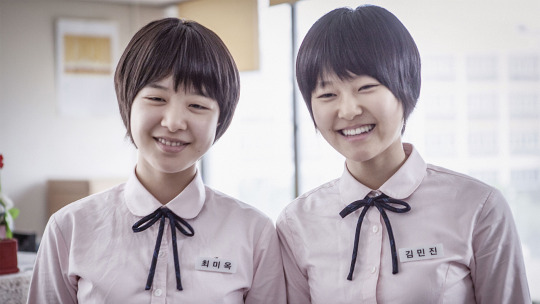
The intersection of the genre and culture can further be seen in the syntax/semantics of The Truth Beneath by focusing on the characters’ societal roles and relationships. One of the factors behind Minjin’s death is her and Mi-ok’s blackmail of their schoolteacher’s affair. In return for keeping her secret, they received test answers and their grades were able to skyrocket. In Korea, academics are of the utmost importance and its education system’s funnel to success is especially cutthroat. The blackmail done that enables the girls to obtain the test scores speaks to the pressure of academic achievement and contributes to both the gravity of the overall situation and the film. This pressure to conform is also present in the ostracization of the girls due to their own music tastes and dreams. This social commentary appeals to the audience who have likely experienced these struggles for themself and increase how emotionally invested they are. This is also crucial to this film as emotional investment is already important for overall film and media but especially in thriller mystery where so much relies on the suspense and anticipation gained by caring about the characters’ wellbeing which is already hanging in the balance. Viewers are on the edge of their seats waiting to find out what happened to Minjin after seeing how dedicated both Yeonhong and Mi-ok are to her. Closure is received as those responsible are fully punished and revenge is fulfilled but all parties are still utterly devastated and lost by the tragedy. Peace does not exist and the social situations that haunt Yeonhong and Mi-ok at the beginning of the film still continue by the end. They are stuck and as a result, the semantic elements of tension, anxiety, and suspicion are left with them even after they are over their anticipation and relief of avenging Minjin.
Another claim by Braudy is that “the joy in genre is to see what can be dared in the creation of a new form or the creative destruction and complication of an old one” (666). This film embodies this perfectly especially with its hybrid genres and its further exploration into societal and gender norms. The film embraces the thriller mystery genre and presents unexpected yet strong and distinct characters and plotlines. From the typical trope of a politician’s daughter going missing and the expectations of thrillers and mysteries, audiences start this film thinking they know what is about to happen. However, The Truth Beneath certainly holds its own and utilizes its situations, characters, and elements to incorporate twists and shock the viewer with its imagery and revelations at every opportunity. The Truth Beneath uses the genre truly amazingly and produces a refreshing interpretation of the thriller mystery genre.
Braudy, Leo, Marshall Cohen, and Rick Altman. “A Semantic/Syntactic Approach to Film Genre.” Essay. In Film Theory and Criticism: Introductory Readings. New York: Oxford University Press, 2009.
Braudy, Leo. “Genre: The Conventions of Connection.” Essay. In The World in a Frame. Garden City, NY: Anchor Press, 1977.
0 notes
Text
Are the Newcomers affected more by using the drug than the humans because it was created with their biomaterial? Were Newcomers more targeted by the spreading of these drugs?
Alien Nation (1988): Roundtable #2
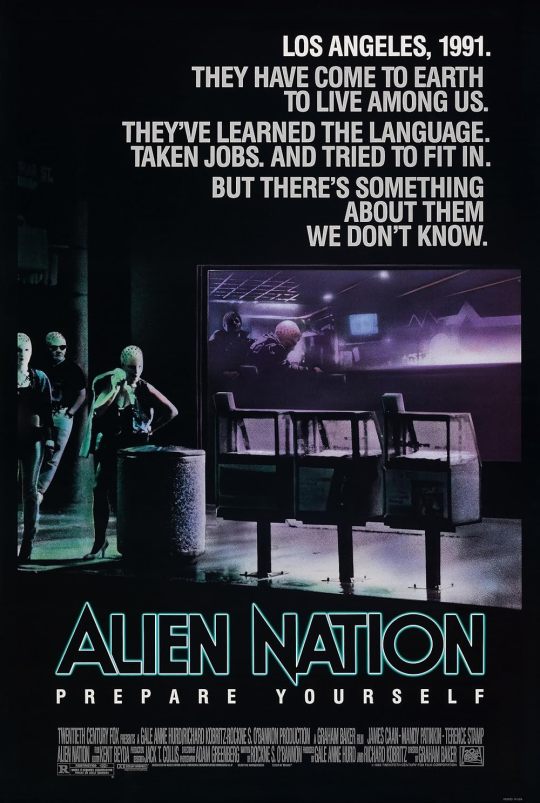
In Graham Baker’s Alien Nation, extraterrestrial beings (“Newcomers”) land on Earth as refugees. The aliens, who are mostly human in appearance, are survivors of a slave ship that crash-landed on Earth, and began to integrate into human society after 3 years of quarantine. One of the Newcomers, Sam, begins working as a detective, and is paired up with human Matthew Sykes to investigate a series of murders. Sykes is openly bigoted towards the Newcomers, potentially because his old partner was killed by a Newcomer. However, they learn to work together, and end up uncovering a dangerous underworld involving a potent drug called "Jabroka”, which was used to pacify Newcomers when they were slaves. The drug is highly sought after by both humans and Newcomers, leading to corruption and crime in both communities. The investigation reveals that the drug is produced using Newcomer physiology, specifically their sweat, making them unwittingly involved; they are exploited by the human criminals responsible for the drug trade.
youtube
The film serve as an allegory for racism and immigration, with the Newcomers being marginalized in human society. They are portrayed as physically different from humans, having distinct features such a bald heads and spotted skin; these physical differences contribute to their de-individualization, as they are seen as one homogenous group rather than individuals. This physical distinctiveness is analogous to the way racial features have been historically used to justify discrimination.

The Newcomers face social isolation and discrimination from humans, similar to the experiences of marginalized groups in real life. They live in segregated areas known as “Slagtowns”, and the practice of creating these areas and allocating resources to them is reminiscent of redlining. This segregation reinforces the idea of "us versus them”; by depicting the aliens as a separate and potentially threatening group, the film reflects the historical and systemic discrimination faced by various communities. The Newcomers also face discrimination in the workplace, being relegated to low-status jobs and often being exploited for their abilities.
Although the movie does make a statement about the way immigrants and other marginalized people are treated, I found it ironic that the first character to die was the only Black character (Sykes old partner) in an all white cast. The film also emphasized the Newcomer’s “violent nature”, a phrase reminiscent of the rhetoric used to keep marginalized people oppressed today.
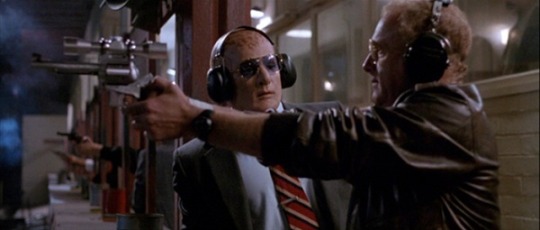
3 notes
·
View notes
Text
Does any human other than Jake directly interact with the Na'vi and make an effort to understand their livelihoods?
Roundtable 2: Avatar

The film Avatar, by James Cameron, can be interpreted as a symbolic representation of colonialism. The movie is set on the fictional moon of Pandora, where humans are seeking to extract a valuable mineral called "unobtanium" from the land inhabited by the indigenous Na'vi people. The symbolism of race in "Avatar" is primarily conveyed through the conflict between the human military complex and the Na'vi, who are depicted as an un-human, blue-skinned, species. The film uses these alien yet human-like creatures to represent the ways in which indigenous people are seen by colonizers as innately different, and therefore less valuable. Helen Addison-Smith writes that these alien others, seen as predatory because of their physical differences, represent how “techniques of de-individualisation and biological reification” are used as justification for colonization (28). The distinction of use of technology and weapons reifies the inequality between the Na’vi and the humans. The Na’vi are connected to their environment, using nature to power their society, while the humans use man made technology to conquer and destroy. The humans see this as an excuse to colonize and take their resources, clearly paralleling historical and current colonization of less technologically advanced areas for their natural resources. The Na'vi connection to Pandora is deeply spiritual, and their homeland is integral to their way of life. The film suggests that the destruction of a homeland not only results in environmental devastation but also cultural and spiritual loss for the indigenous population, as seen in many real world instances. The conflict in Avatar is exacerbated by the humans' exploitation of Pandora's resources, leading to environmental destruction. This can be seen as an allegory for environmental racism, where marginalized communities, often communities of color, bear the brunt of environmental degradation caused by colonizers industrial activities. On another note, the film has been criticized for employing the "white savior" trope, where a white protagonist becomes the leader of the oppressed indigenous people and plays a crucial role in their liberation. Avatar has been criticized for reinforcing a patronizing perspective where the marginalized group needs a heroic outsider to save them. Overall, this science fiction film is emblematic of larger issues regarding the use of racial superiority as justification for colonization.
youtube
2 notes
·
View notes
Text
Do the wives have much independent agenda or are they just waiting for Max to rescue them?
Roundtable 2: Race in the Imaginary and Mad Max: Fury Road (2015)
youtube
Mad Max: Fury Road is a 2015 film by George Miller that many hail as a feminist manifesto. It’s set in a barren wasteland, supposedly the not-too-distant future after the Water Wars and the depletion of oil. It follows Max after he’s captured by Immortan Joe’s War Boys and Furiosa’s attempt to flee and free Immortan Joe’s wives. It involves endless perfectly edited practical car chases, Nicholas Holt in so much makeup you can’t recognize him, and simply named characters and places like the “Bullet Farm” and “War Boys.”
It is clear from the very beginning that Immortan Joe is evil: his first scene involves close-ups of his battered and radiation-poisoned body. He is the alien because, according to Helen Addison-Smith's article, an “alien is easy to identify, and particular judgments about them are thus easily drawn from their appearance alone” (27). Several members of his “team,” like his son Corpus Colossus or The People Eater, also have emphasis put on their atypical bodies. Max and Furiosa, on the other hand, are not aliens: they’re conventionally attractive, able-bodied, recognizable humans. While Furiosa is missing her left forearm, she has a mechanical prosthetic and there is no attention drawn to this. Through the lens of Addison-Smith's article, it could be argued that Miller uses atypical bodies to signify alien- and otherness.
youtube
Another very important point to bring up is the setting of this film. Though never explicitly stated, it is set in the Australian outback, a country that is home to Aboriginal and Torres Strait Islander populations and was stolen by the British. As far as I know, Courtney Eaton (Cheedo the Fragile), whose mother is of of Chinese, Cook Island and Māori descent, is the only indigenous actor in the film. Addison-Smith addresses this phenomenon, writing that “The diasporic subject has a sense of belonging to a place where [they do] not live … it ‘is the myth of the (lost or idealized) homeland, the object of both collective memory and of desire and attachment, which is constitutive to diasporas’” (28). A large part of the film’s plot is Furiosa and The Wives returning to Furiosa’s “homeland”: The Green Place, home to the Many Mothers. But, for the most part, none of this land belongs to any of the characters in the film – they do not have a right to it and, at the end of the day, they caused the apocalypse that landed them in the Outback fighting for their lives.
@theuncannyprofessoro
7 notes
·
View notes
Text
How does the lack of good-willed adults impac the boys' roles and actions?
Roundtable 2: Race in the Imaginary and Attack The Block (2011)

youtube
Attack The Block (2011), directed by Joe Cornish, is a sci-fi film that takes place in South London, and follows a group of trouble-making teenagers who must defend themselves and their apartment complex from extraterrestrial beings. The film begins with the group of teenagers attempting to rob an innocent woman, but their attempt is cut short when something falls from the sky, and lands in a nearby car. Once the woman runs off, the boys go to investigate the car, and stumble upon an alien creature who lunges at them. Originally, it seemed as if the villains were the teenagers, however the landing of the alien establishes the real danger of the story. After they take off the bandanas they had obscuring their faces, and we get a glimpse at their comradery, it's obvious that they are just children.
The boys' failed robbery from the beginning comes back to haunt them, as the woman, Sam, contacts the police to find them. Now, not only does the group have to run from aliens, but the police as well. As the group runs for their lives from aliens, two police officers manage to grab hold of the group's "leader", Moses, played by John Boyega. This is one of many times that the police chase after them, as if they are the aliens, rather than catching the actual aliens that are killing civilians. Here, a comment is being made on the fact that teenage boys of color, specifically Black boys are disproportionally sought after by law enforcement. Moses even goes, to say "I reckon, the Feds sent them anyway. Government probably bred those things to kill black boys. First they sent in drugs, then they sent guns and now they're sending monsters in to kill us”, showing that even in a world where rampaged aliens are killing humans, children of color are seen as the threat.

Most of the film takes place inside, or just outside of a giant housing project in South London, known as, “The Block”. We learn that this is where almost all of the boys live, and a place they feel is their duty to protect, often stating "nobody fucks with Block"(7:09). The building is akin to an eery, futuristic fortress, however it is a clear home for the boys. Though the boys have different personalities, and we get brief glimpses into their differing home lives, The Block marks a universal place of belonging for them. A place where identity is characterized by protecting one another from the impending threats of aliens and law enforcement, both of which have no regard for the boys as people. Though they are seen merely as thugs by law enforcement, the movie works to bring humility to them through giving depth to their personalities, and addressing the socioeconomic context of their lives.
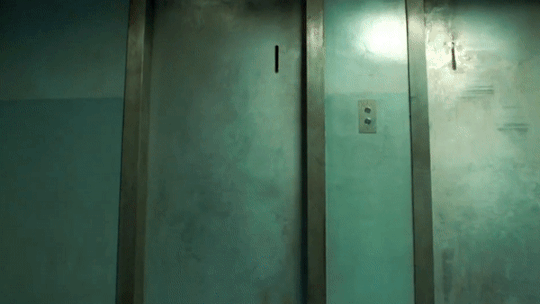
10 notes
·
View notes
Text
When the Oms escape and gain their freedom, does this give the Draags more of the alien role because they become the abnormal and horrific creatures for doing this to them?
La Planète Sauvage (1973) Race in the Imaginary

René Laloux’s La Planète Sauvage (1973), an experimental animated science fiction art film, is as strange as it is dense with implications. The politically charged dissonance of psychedelia combined with the film’s Dali-esque surreal cutout stop-motion animation universe, realized by French avant-garde artist Roland Topor, has solidified this film as a seminal work of animation and a cult science fiction feature. The film is set in the hallucinatory landscape of the planet Ygam, where gargantuan blue humanoid creatures called Draags who rule the planet enslave humans (called Oms–a play on the French homme)--Terr, an Om who has been kept as a pet since Traag children killed his mother in his infancy escapes from his child captor and bands together with a band of radical escaped Oms to resist the Draag regime and impending genocide. The film is markedly allegorical for its use of imagined alienness to establish otherness and marginalization, and the techniques the Draag use to subordinate the Oms evoke historically significant racist discriminatory practices. Simply, it feels like a movie that is bluntly about something beyond what it appears to be, and the slight heavy-handedness of its messaging reifies its goal of engaging in racial discourse.

The racial politics of Fantastic Planet are strange in that the broadness of the trenchant sociopolitical commentary imminent in the dynamic between oppressor and oppressed has led critics to draw comparisons between the plot and the narrative around “animal rights” and the (mis)treatment of domesticated animals, yet the human-ness stitched into the film’s fabric positions it as a text specifically interested in the ways humans create divisions among themselves. The Draags and the Oms, despite their vast difference in physical size, do resemble one another and take on different forms of the corporality of a human being, and for this reason and many others, Fantastic Planet seems to be a film about how we could recognize ourselves in one another and still splinter into factions and enforce senseless violent domination.

Terr’s captor, a girl named Tiwa, has given him a collar to control him as he attends “school” with her, which involves her wearing a headset that transmits facts into her brain, and a defect in his collar inadvertently allows him to learn the same knowledge as Terr, knowledge he ends up using to save the Oms. Intelligence is the gateway to capital in Ygam and the Draags are highly intellectualized beings who pride themselves on their inborn wisdom and biological superiority that allows them to far outdo the meager Oms in their knowledge–the film comments on the complications of the racialized bioessentialist understanding of knowledge that would posit that being smart, and subsequently having value, is a fixed innate biological trait. The Oms navigate the world through cunning, outwitting the Draags practically in ways they might fail to do so intellectually and the Draags and Oms counter one another in the film on what “counts” as knowledge: the Draags favor transcendental meditative practices that imbue them with highly complex perspicuity, whereas the Oms argue that their knowledge is more useful for the ways it enables them to survive despite their circumstances. The Oms are made alien not only through their physical inferiority but also because they exist in a society that was not built for them. Fantastic Planet depicts an idea of home that is stringent upon exclusivity and requires technical superiority to belong; shoring up racial politics, Fantastic Planet deploys a social constructionist standpoint that colors these divisions as the products of structural forces benefitting only those who erected them.
youtube
13 notes
·
View notes
Text
Why does Dark only feel safe enough to share his feelings and anxieties with Montgomery?
Race in the Imaginary: Nowhere (1997) dir. Gregg Araki

"L.A. is like... nowhere. Everybody who lives here is lost. "
-The opening quote of Nowhere
"In general, these films worry that the most violent and degraded acts are possible to those who do not inhabit a home or homeland."
-Helen Addison Smith, "E.T. Go Home: Indigeneity, Multiculturalism and ‘Homeland’ in Contemporary Science Fiction Cinema"
Gregg Araki describes his film Nowhere as "Beverly Hills 90210" on acid. Nowhere follows a number of uniquely-named, all somewhat inter-connected teenagers (Lucifer, Dingbat, Egg, Jujyfruit...) in Los Angeles over the course of one day as they engage in an aimless cocktail of drugs, sex, polyamory, BDSM, and parties. The world of the film is in constant flux between reality and fantasy (and it is very, very, very queer). Everything is extremely heightened: there are lengthy, gratuitous sex scenes, a seemingly unlimited access to space, an abundance of drugs, and vast, artistic bedrooms that real teens would only dream of.

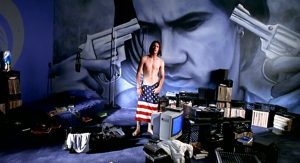
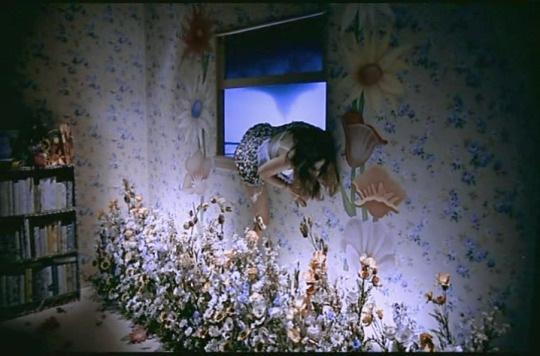

In my interpretation, the film's world is an external representation of the teens' imaginations and their feelings of an endless, indestructible youth. While this world is a step above reality for the viewer, it is real to the characters. However, this overindulgence is not without it's consequences. The first half of the film is a sort of queer, sex-positive utopia seemingly free of prejudice in which the teens can have sex with whoever they want, go wherever they want, and so on. This all seems to crumble in the second half of the film, as the teens' endless consumption unravels into overdose, sexual assault, suicide, violent fights, and broken hearts. Araki does not seem to be prudish or critical of this queer nomadic lifestyle, though. He seems to posit that this imaginative world is sadly incompatible with the "real world" of capitalist society at the turn of the century.

Now for the sci-fi. Unbeknownst to every character except Dark, the day on which this film takes place is sort of Judgement Day; the last "normal" day before aliens come to take over the planet.
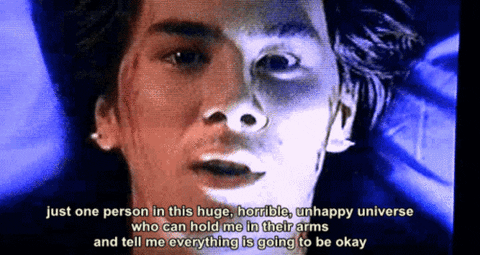
Dark is the main character of the film, and offers some narration through diary entries and videos he takes of himself and his friends. He is played by James Duvall, a multiracial actor. Dark becomes increasingly unhappier as his girlfriend Mel spends more and more time with her girlfriend Lucifer, who he hates. He grows weary of their indulgence sexually-open arrangement, simply wanting to fall in love and be committed to one person that will anchor him in a world he feels lost in. As he gets more disconnected from Mel, he finds himself infatuated with Mongomery, a boy who goes to school with the teens but who Dark knows little about.
youtube
At the same time as Dark's discontent with his lifestyle grows and he finds himself falling in love with Montgomery, he sees a bunch of giant alien creatures roaming around the city, abducting people. Dark is the only character able to see these aliens, which seems to be no coincidence alongside the fact that he is the only character verbalizing any anxiety about the future and the teens' lifestyle. In one diary entry, he says:
"I feel like I’m sinking deeper and deeper into quicksand, watching everyone around me die a slow, agonizing death. It’s like we all know, way down in our souls, that our generation is gonna witness the end of everything. You can see it in our eyes."
In the final scene of the film, Dark returns home after an empty night of partying and a fight with Mel. Montgomery appears at his window and tells Dark that he was abducted and tested on by the aliens. The two boys lie together on Dark's bed and confess their love, promising to never leave each other. Just when it seems like Dark has found what he has been longing for, Montgomery goes into a violent coughing fit and explodes, leaving a bug-like alien in his place that crawls out of Dark's room, and the movie ends.
youtube
While the aliens in Nowhere are not necessarily representative of a racialized Other according Addison Smith's analysis of Sci-Fi films, the impending doom of an alien invasion and Dark's isolating anxiety is quite in line with Addison-Smith's reading of home and homeland. Araki's identity as Japanese-American director and Duvall's as a multiracial American actor are factors in this reading of the film. Since this film is thus told from a mixed/multiracial perspective, the its anxiety is not surrounding the (white/Western) fear of "losing" a home to outsiders, but the fear of not belonging to any one home in the first place.
Addison-Smith writes:
"For many people in self-avowedly multicultural nations such as
the United States, their status as migrants, be it forced or economic, recent or later generational, means that 'home’ has become a complex, multiple and sometimes fraught notion. That such multiple belongings to place is not confined to recent migrants can most immediately be seen in the labelling of many ethnic groups through the joining of two place names (African—AmericanJapanese-American)" (28).
Araki uses Los Angeles as an unstable home in this film (note the opening quote at the top of this post). He plays upon the notions of transplants to the city, and the stereotypes that the city and its inhabitants are vain and superficial. The characters move throughout the city at will, with no connection to any particular space. Actual homes are places of confinement and depression (both the suicides in the film occur in character's bedrooms).
I read that Dark's ability to see the aliens is a representation of his sense of displacement and anxiety for the future. When Montgomery enters his room and the two share an extremely intimate, tender moment, his room finally begins to feel like home, rather than its previous role as a space for his lonesome brooding and masturbation. But when Montgomery explodes as is replaced by an alien, Dark's vision of home and someone to share it with also figuratively blows up in his face; home feels impossible.


Finally, Montgomery's objectification by Dark's infatuation and his identity as a white queer man seem to be an inversion of both romance and Sci-Fi tropes. Montgomery seems to occupy both the role of the "Manic Pixie Dream Girl" in Dark's desire to be saved by him, and the racialized alien Other in his mysteriousness and his constant affiliation with the aliens. Addison-Smith writes, "An alien is easy to identify, and particular judgements about them are thus easily drawn from their appearance alone, so rooting their ‘racial nature' in their biology" (27). Montgomery definitely stands out in this world. He has different colored eyes, is always dressed in white, appears to Dark miraculously by a sign that reads "God help me," and, unlike very other character, is quiet and keeps to himself. He is alien and even an angelic figure to Dark, a unique representation against Addison-Smith's notions of the racialized alien as either invader or teacher.
The entire movie Nowhere is on Youtube! I think it's really great, but there's a ton of trigger warnings (sexual assault, drug abuse, suicide, eating disorders, physical assault, gore). The quality is also very bad. Proceed with caution.
youtube
12 notes
·
View notes
Text
Do you think Panem geographically being based on the United States' regions affects these decisions and do you think they should have disregarded that?
Race in The Hunger Games
The Hunger Games (2012) is a film adaptation of the critically acclaimed novel series by the same name, followed by three more movies and a prequel movie that came out this year. The basic concept of the story is a nation called Panem that has been divided into districts, each responsible for a specific need in the nation (electricity, coal, fishing, transportation, etc.). In districts 1-12, number 1 is the richest district while 12, the poorest district, is the home to main characters Katniss and Peeta. Most of the characters in the films are white with the exception of a few characters. Even in the crowd shots in the film the background actors are majority white.
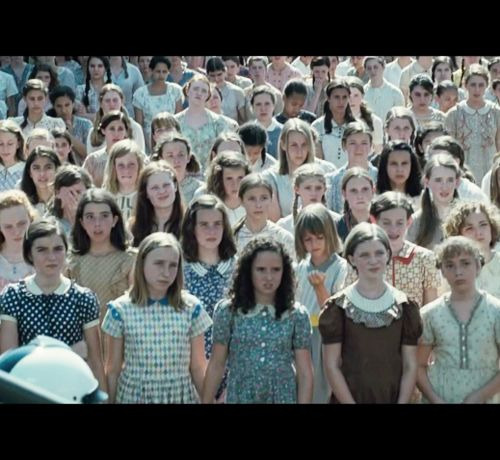
District 11 is a district made up of mostly black people, with their focus on agriculture. It is said to be reflective of the American south, but Collins received a lot of criticism for putting all the black people in one district and having their focus be crops because it is reflective of slavery. Two Hunger Games tributes come out of District 11: Rue and Thresh, brother and sister. Rue forms a strong bond with Katniss, but eventually dies, which is a driving force for Katniss to rebel against the Capitol later on. When Rue dies, District 11 revolts, and are met by violence from the “Peacekeepers” which are the story’s representation of police.

Dividing the nation into districts is how Suzanne Collins emphasizes the different identities and different opportunities; the richer districts receiving better opportunities and treatment from the government. But, Collins has received criticism for putting social class/monetary value as the central cause for oppression in this futuristic society, as some critics have argued the emphasis on class complies with the liberal tendency to reduce “class to inequality in order to deflect attention from racial disparities.” Even so, placing all the black people in one district and putting them in the second-poorest district is quite weird. If Collins’ point was being realistic or “color-blind,” it would make more sense to make all districts ethnically diverse. This immediately ostracizes the black characters as the other characters and the film’s audience associates their race with their social standing.
Since District 12 is the poorest, it receives little attention from Panem’s government. But, District 11 is overly patrolled by the “Peacekeepers,” reflecting the over-policing of black communities in the U.S. “During the Games, Rue tells Katniss that the District 11 citizens are all forced to work on the farms for the harvest and are whipped for resisting or stealing the food. Katniss realizes that perhaps there are benefits to being the poorest district, since the Capitol ignores most of what goes on in District 12. What she has stumbled onto is white privilege: she may be poor, but her skin color gets here more freedom than Rue gets. This important detail, however, receives almost no attention in the book and is completely left out of the film.” (A Game of Race, Ian Pultz Earle). The technologies/lack of technology that separate district 11 from others are the surveillance state that they live in which is very different from district 12 which is completely neglected by the government.
5 notes
·
View notes
Text
If Mace were the main character of the movie, do you think Lenny's character would still be relevant?
Strange Days (Kathryn Bigelow, 1995)

Strange Days (Kathryn Bigelow, 1995) is a science fiction thriller set in Los Angeles during the last two days of 1999. With the general consensus being that the end of the world is imminent: Los Angeles has devolved into a warzone of debauchery, violence, and crime. The film centers around ex-cop Lenny, who deals SQUID devices on the black market. SQUIDS are illegal devices that record peoples’ physical sensations and memories from their cerebral cortex onto a mini CD disc that allows them to be played back and experienced by anyone.

Lenny’s ex-girlfriend Faith’s friend Iris ends up recording police murdering black rapper and activist Jeriko One. The audience has only briefly been introduced to Jeriko via a speech he gives on television protesting the police state that Los Angeles has fallen into and pushing for peace. Since Jeriko’s character is not further developed before he is killed, he exists as more of a symbolic placeholder for all of the innocent black people that police have murdered. Iris is then chased by police but ends up getting the tape to Lenny before she is brutally raped and murdered. Lenny and his driver/bodyguard/friend Mace (who is also in love with him) then have to run from everyone who’s trying to kill them and Mace gets the tape of the murder to the police commissioner.
It’s interesting that even in this apocalyptic, end-of-the-world setting, racially motivated violence and police brutality are still prominent. Bigelow has discussed in interviews being motivated to begin production following impactful incidents in the 90’s such as the Lorena Bobbit trial and the Rodney King verdict and the riots that followed in 1992. Multiple of the characters in Strange Days are overtly racist (ie. the cops/murderers), but more subtle racism also permeates throughout. When trying to figure out how to get the video of Jeriko’s murder to the public, Mace and Lenny go to Lenny’s “friend” Max (who will turn out to be an awful person) for help. Max says simply that Lenny and Mace should not show the tape because there will be riots. In this moment Max is willing to silence the story of police murdering a black man to avoid causing a more than warranted uprising.
Bigelow seems to have intentionally sought to explore the intersection between race and gender as she stated that she created Mace’s character to examine "valuable connections between female victimisation and racial oppression." Mace proves to be stronger and more confident than Lenny; she repeatedly saves their lives and gets them out of tricky situations, yet she is still reduced to the role of his bodyguard/driver, and not given much of a story outside of Lenny’s world. At one point when they are in the car, she points out this dynamic saying “driving Mr. Lenny,” a reference to the film Driving Ms. Daisy (Bruce Beresford, 1989). Mace is additionally in love with Lenny because he stepped in and helped her take care of her son when the kid’s father was no longer around. Despite Mace being a strong, smart, and badass, black woman, her story is somewhat reduced to being the white man’s sidekick. She is also in love with Lenny for the entire film and when they eventually kiss at the end, it feels like she has now only existed to be his love interest.
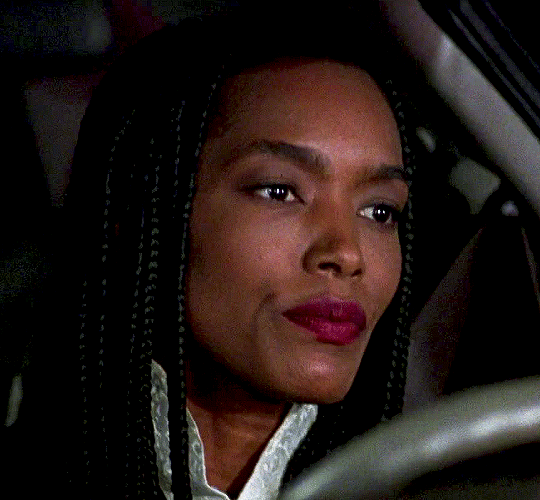
8 notes
·
View notes
Text
Why do you think there needs to be the white powder drugging the community when the government is already putting more drug dealers in the community?
They Cloned Tyrone

They Cloned Tyrone is a sci-fi mystery drama that follows the story of a drug dealer named Fontaine, who discovers a shocking conspiracy that his entire neighborhood is a part of. Starring John Boyega as Fountaine, Teyonah Parris as a sex worker, Yo-Yo, and Jamie Foxx as a pimp named Slick Charles, the film follows Fountaine and the gang as they try to figure out the truth while finding themselves sinking deeper into the rabbit hole of lies and secrets spread farther than they’d imagined. Fountaine, who was shot in a drive by shooting, came back the next day as if nothing had happened. Slick is shocked because he saw them murder him and immediately knows something is up. When they go to get Yo-Yo's help, they are led to an abandoned house where they find an underground lab where these scientist are running human cloning experiments. This is where they find Fountaine's dead body, the one that Slick had seen the day before.

Fountaine realizes that he is a clone and that the government is surveilling all of Glen, the fictional town in which they live. Slick finds a white powder in the lab which he figures out if being put in the chicken they eat, the hair relaxer at the salon, and in the juice they give out at the communion. Along with this, the music is also a factor of hypnotism against the black community.
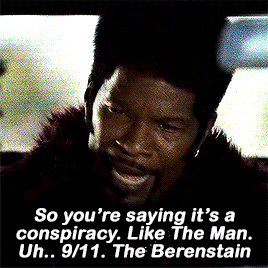
In the end it is revealed that the government has made clones of most people in the community of Glen, specifically people like Fountaine and Slick, who are drug dealers and pimps, in order to damage the well being of the people. It is revealed that these simulations are running in multiple cities around the U.S. including L.A, Chicago, and Detroit(all cities with majority Black populations). The ending shows that Fontaine, Yo-yo, and Slick are nowhere near finishing what they started. The movie deals with topics such as free will, community, and personal responsibility. They indirectly address issues that the government has set up against the black community, such as gentrification, the crack epidemic, and police brutality.
8 notes
·
View notes
Text
Why do you think it is necessary for this film to be of the dystopian genre even though there is no advanced technologies or systems?
Roundtable Queries: Race in the Imaginary, Born in Flames (1983)

How does the film use human technologies and/or imagined alienness to establish different identities?
In spite of taking place in a dystopian future, there is no explicit depiction of advanced technologies. Born in Flames is set ten years after a peaceful revolution that has rendered America a Democratic socialist state. This supposed stride in progress has not stopped the oppressed from being marginalized. As a response to their oppressive conditions, a group of women-led community organizers take matters into their own hands with increasingly radical approaches. Writer-director Lizzie Borden's vision of the future suggests that dystopia might not be too different from present-day society.
youtube
How does film de-individualize and/or biologically reify alien characters that mimic racial prejudicial and discriminatory practices?
There are no aliens in this film, but alien identity is certainly a central theme. Women themselves are presented as somewhat alien in the ways they have been ostracized/signaled out as other. One such example is women being fired on the basis of sex. Different forms of labor are depicted from secretarial work to construction, showing the ways in which identity can be informed by one's contribution to capitalism (even if it has been repackaged as socialism).
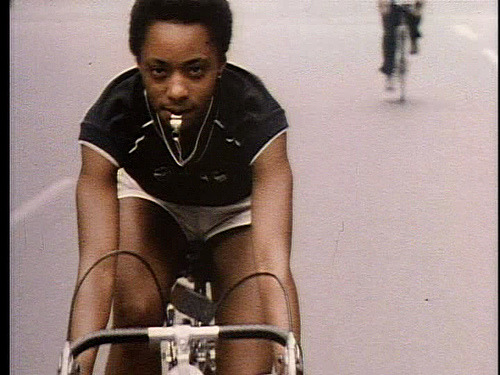
In what ways does the film depict home for the characters?
Home is shown through varying New York apartments. Outside of the tumultuous cityscape, these are places of respite. Food is served, community is engaged with, friendships are formed. I was reminded of multi-disciplinary artist Carrie Mae Weems' "Kitchen Table Series," which featured photographs of Black women in varying tableaus. Within Weems and Bordens visual landscapes, kitchens are portrayed as emblems of intimacy and identity.
How does technology inform definitions of home/land, indigenes, and aliens?
As I stated earlier, futuristic technology does not factor much into this particular film. That said, television/radio broadcasting are used to relay messages of political ideology and statehood. In one sequence, a women's group breaks into a news station and holds employees at gunpoint until they play a message about a Black community organizer who mysteriously died in prison. Born in Flames shows the power of mass media as a form of control and resistance.

In what ways do the character relations reflect anxieties of racial identity, racial mixing and/or passing, migration, and invasion and/or colonization?
As a magnum opus on intersectional feminism (before the term was coined), much of the film concerns the cultural forces that separate different groups of women. There is a group of white, female journalists who decry the "separatist" actions of more radical groups. In the end, it is unity amongst women that is the enactor of change, signaling a present-day call to action as broadcast from Borden's not so distant future.
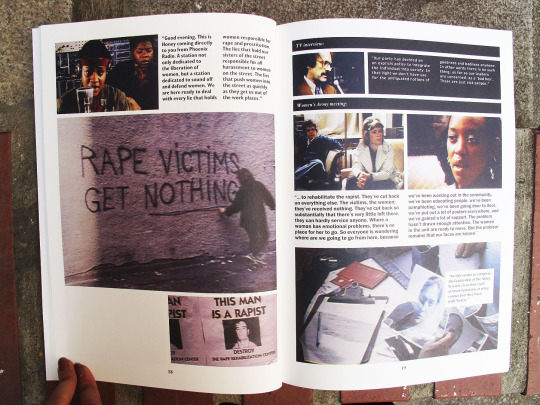
@theuncannyprofessoro
9 notes
·
View notes
Text
As the only two women in positions of power, do Ellie and Rachel support each other or have some kind of deeper relationship/solidarity?
Contact Viewing Response

Contact, directed by Robert Zemeckis and released in 1997, follows the story of Ellie Arroway, played by Jodie Foster, who is an astronomer looking for proof of extraterrestrial life in space. Her dream began at a young age with the help of her father, who suffered a heart attack when she was nine years old but she persevered and continued to follow her dream in honor of him. As a young adult, Ellie started working for the SETI program (Search for Extraterrestrial Intelligence), but the program is threatened to be terminated by the President’s science advisor. Four years after starting to work for SETI, Ellie discovers a signal coming from the star Vega, and after further investigation, her team decides that this transmission should be strong enough to allow them to travel to Vega by penetrating the Earth’s ionosphere and sending them back to Earth. She decodes the signal and finds that it contains information about a machine that can be built to transport an individual between space. Human made technologies are utilized in this film, which are used to connect with the extraterrestrial world.
youtube
Even though this film stars a female lead, it does have a predominantly male, white cast, and one of the only characters of color is Rachel Constantine (played by Angela Bassett), who is the National Security Advisor to the President. She is the only other predominant female figure in this movie alongside the lead. Her role in the government’s involvement with the extraterrestrial contact mission and construction of the machine is very significant and she is a very authoritative figure within the film.

Contact brings up questions surrounding religion and science, as when controversy arises over the machine being built, religious extremists strongly oppose the mission due to claims about it challenging their faith and humanity’s place in the universe. The machine ends up being bombed on the day of its launch, preventing any sort of contact with extraterrestrial intelligence and unknown entities. Later, a second machine is secretly constructed in Japan and Ellie is chosen for the mission. She travels through multiple wormholes and finds herself on a beach similar to one from her childhood, where she sees an alien-like figure that appears to be her deceased father. In a way, Ellie’s home is with her dad, whether or not that is physically on Earth or on Vega, reuniting with him as a young adult in a strange sort of dreamy way. After reconnecting with him, she loses consciousness and finds herself back in the machine’s pod, with the mission team trying to contact her through her recording device. She tells them that she was gone for 18 hours, but they insist that all they received was static noise for just a few seconds.
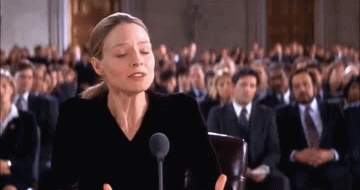
Despite doubt over the success of this mission, it is later discovered that although her recording device only recorded static, it was indeed 18 hours worth of it. She was continuously told she must have hallucinated and that because she did not have any physical evidence, it could not have been real. Often in the scientific field, women are often doubted and not taken seriously in their research and discoveries, so maybe this testimony would have been received differently had it been a man making these claims. In her testimony, Ellie claims that this mission impacted her humanity and everything she has ever known as a human being, which is a recurring theme of this film.
8 notes
·
View notes
Text
As the only two women in positions of power, do Ellie and Rachel support each other or have some kind of deeper relationship/solidarity?
Contact Viewing Response

Contact, directed by Robert Zemeckis and released in 1997, follows the story of Ellie Arroway, played by Jodie Foster, who is an astronomer looking for proof of extraterrestrial life in space. Her dream began at a young age with the help of her father, who suffered a heart attack when she was nine years old but she persevered and continued to follow her dream in honor of him. As a young adult, Ellie started working for the SETI program (Search for Extraterrestrial Intelligence), but the program is threatened to be terminated by the President’s science advisor. Four years after starting to work for SETI, Ellie discovers a signal coming from the star Vega, and after further investigation, her team decides that this transmission should be strong enough to allow them to travel to Vega by penetrating the Earth’s ionosphere and sending them back to Earth. She decodes the signal and finds that it contains information about a machine that can be built to transport an individual between space. Human made technologies are utilized in this film, which are used to connect with the extraterrestrial world.
youtube
Even though this film stars a female lead, it does have a predominantly male, white cast, and one of the only characters of color is Rachel Constantine (played by Angela Bassett), who is the National Security Advisor to the President. She is the only other predominant female figure in this movie alongside the lead. Her role in the government’s involvement with the extraterrestrial contact mission and construction of the machine is very significant and she is a very authoritative figure within the film.

Contact brings up questions surrounding religion and science, as when controversy arises over the machine being built, religious extremists strongly oppose the mission due to claims about it challenging their faith and humanity’s place in the universe. The machine ends up being bombed on the day of its launch, preventing any sort of contact with extraterrestrial intelligence and unknown entities. Later, a second machine is secretly constructed in Japan and Ellie is chosen for the mission. She travels through multiple wormholes and finds herself on a beach similar to one from her childhood, where she sees an alien-like figure that appears to be her deceased father. In a way, Ellie’s home is with her dad, whether or not that is physically on Earth or on Vega, reuniting with him as a young adult in a strange sort of dreamy way. After reconnecting with him, she loses consciousness and finds herself back in the machine’s pod, with the mission team trying to contact her through her recording device. She tells them that she was gone for 18 hours, but they insist that all they received was static noise for just a few seconds.

Despite doubt over the success of this mission, it is later discovered that although her recording device only recorded static, it was indeed 18 hours worth of it. She was continuously told she must have hallucinated and that because she did not have any physical evidence, it could not have been real. Often in the scientific field, women are often doubted and not taken seriously in their research and discoveries, so maybe this testimony would have been received differently had it been a man making these claims. In her testimony, Ellie claims that this mission impacted her humanity and everything she has ever known as a human being, which is a recurring theme of this film.
8 notes
·
View notes
Text
Do the white people in this movie take problems with Cassius using a white voice or passing as white, or are they more satisfied by him doing so instead of talking in his own way?
Sorry To Bother You - Roundtable Presentation
youtube
Sorry to Bother You (Boots Riley, 2018), follows Cassius Green as he begins work as a telemarketer. After months of late rent and struggling to get by, he settles for the only job that will “hire anyone”. At first, Cassius struggles to get through to anyone over the phone and is constantly being hung up on. Everything changes when he receives some advice from an older coworker, Langston. He instructs Cassius to use a “white voice” over the phone to get customers to listen to him. Langston demonstrates his ability to put on an almost cartoonish voice that immediately masks his Blackness to anyone who can’t see him. Cassius resists at first, but once he tries it there is no going back.
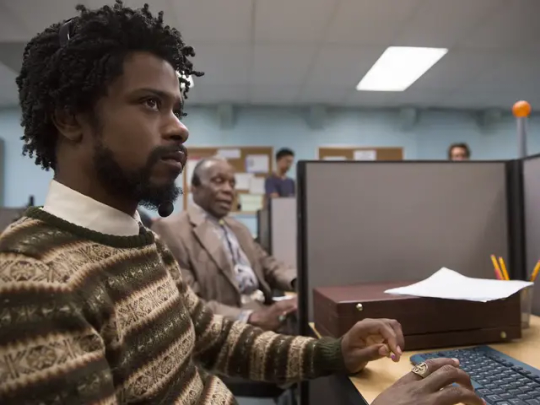
The introduction of the “white voice” is where we see the science fiction piece start to appear. The voice is completely unrealistic, clearly not the actors actually talking. It is as if their voices are being overdubbed by a squeaky overly animated white guy, and the voice is exactly the same for Cassius and Langston. Once Cassius starts succeeding at his work, his calls place him in the room with people, someone will answer the call on the toilet and suddenly Cassius is there with them, adjusting the settings on their bidet for them as he rambles about phone providers. Cassius is able to use phone to bypass his identity, creating a new imagined one through the surrealism of the film. Cassius and Langston are not just doing a voice, they are transporting themselves into another world where they escape some of the anxieties of racial identity and are able to benefit from the capitalist systems they exist within.
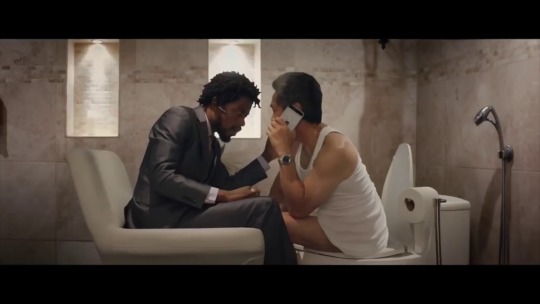
Cassius is so wrapped up in his own success that he suddenly finds himself working with his boss to create a perfectly dehumanizing workplace and against his fellow employees who are fighting for fair treatment in their field. Eventually his conscience catches up to him and he realizes he has been living in an alternate world, one that is in no way real. Sorry To Bother You presents a surrealist take on our dystopian, racist, capitalist world that makes you think about what universe you are living in.
@theuncannyprofessoro
7 notes
·
View notes